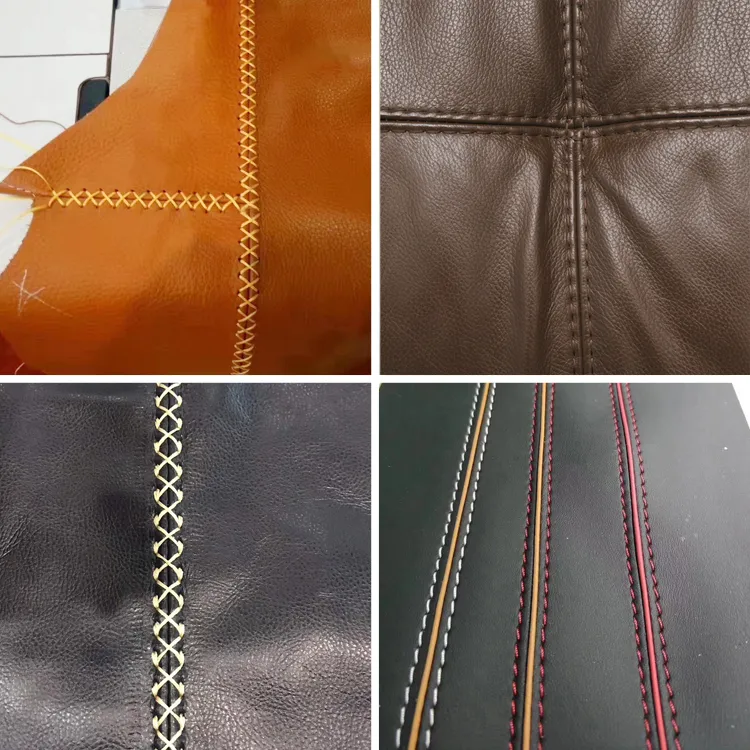Tips for Sewing Faux Leather with Your Sewing Machine
Sewing Faux Leather Tips and Techniques with the Right Machine
Faux leather, also known as synthetic leather or vegan leather, has gained significant popularity in recent years due to its versatility, affordability, and ethical appeal. Whether you're creating stylish handbags, chic clothing, or decorative items, sewing faux leather can be a rewarding endeavor. However, to achieve the best results, it's essential to have the right sewing machine and understanding of some specific techniques. This article explores how to effectively sew faux leather using a sewing machine, offering tips and recommendations along the way.
Selecting the Right Sewing Machine
When it comes to sewing faux leather, the type of sewing machine used can greatly influence the quality of the finished product. While many standard sewing machines can handle faux leather to a certain extent, investing in a walking foot or a heavy-duty sewing machine is advisable. A walking foot helps prevent the material from slipping, ensuring that the layers feed evenly through the machine. This is particularly important for faux leather, which can be slippery or sticky, leading to misaligned seams.
Moreover, look for machines that offer adjustable presser feet pressure and a strong motor, as they can handle thicker materials more effectively. Brands such as Brother, Janome, and Singer often cater to beginners and experienced sewists alike with machines designed for various fabric types, including faux leather.
Preparing Your Material
Before you begin, it's crucial to prepare your faux leather properly. This fabric is typically less forgiving than traditional cotton, so pre-washing is usually unnecessary. Instead, focus on cutting your pieces accurately. Use a rotary cutter and a cutting mat for clean edges, as scissors may create frayed or uneven cuts. Additionally, consider using pattern weights instead of pins to hold the fabric in place, as pins can leave permanent holes or distort the material's structure.
When choosing a pattern for sewing faux leather, opt for designs that feature simple lines and minimal seams, as intricate patterns can often be more challenging to sew. It’s also beneficial to use paper patterns rather than plastic ones, as the latter can stick to the material and cause undesired creases or tears.
Choosing the Right Needle and Thread
faux leather sewing machine

Selecting the appropriate needle and thread is essential for achieving a successful finish. For faux leather, a ballpoint needle or a special leather needle is recommended. These needles have a rounded tip that allows them to pierce through the fabric without damaging it. A size 90/14 or 100/16 needle is typically suitable for most faux leather projects.
As for thread, polyester thread is often the best choice due to its strength and durability, coupled with a slight stretch that helps accommodate the material's movement. It’s advisable to use a longer stitch length (around 3.5 to 4 mm) for sewing faux leather, as shorter stitches can cause the fabric to pucker or perforate.
Techniques for Sewing Faux Leather
When it comes to sewing, there are several techniques that can enhance your faux leather experience. First, always sew with the right side of the fabric facing up to maintain the desired aesthetic. Use a straight stitch or a zigzag stitch for added flexibility, but avoid pulling the fabric through the machine, as this can lead to uneven seams.
To avoid any sticky situations, it can be beneficial to use a Teflon foot or a roller foot, which glide smoothly over the surface of faux leather without causing it to stick. If your machine does not have these specialized feet, you can also place a strip of tissue paper or wax paper under the fabric while sewing; this will help it move more freely.
Finishing Techniques
When it comes to finishing edges, consider using bias tape or a serger for a clean look. Faux leather does not fray like traditional fabrics, so raw edges can often be left unfinished, but binding them can provide additional stability and a professional finish. If topstitching is a part of your design, use a contrasting thread color to create a bold visual statement.
Conclusion
Sewing faux leather can open up a world of creative possibilities. With the right tools, some careful planning, and an understanding of sewing techniques tailored to this unique material, you can create stunning and durable pieces. Whether you’re a beginner or an experienced sewist, mastering the art of faux leather sewing will surely enhance your crafting repertoire, empowering you to design and produce beautiful, high-quality projects. Happy sewing!
-
Industrial Cylinder Arm Sewing Machine: Revolutionizing Heavy-Duty SewingNewsJul.28,2025
-
Cylinder Arm Sewing Machine: Perfect for Special Sewing ApplicationsNewsJul.28,2025
-
Cylinder Bed Sewing Machine: Essential for Sewing Complex MaterialsNewsJul.28,2025
-
Heavy Duty Sewing Machine: The Essential Tool for Industrial ApplicationsNewsJul.28,2025
-
Computerized Pattern Sewing Machine: Revolutionizing Precision StitchingNewsJul.28,2025
-
Heavy Duty Industrial Sewing Machine: Power Meets PrecisionNewsJul.28,2025
-
Leather Sewing Machine: The Industrial Standard for Tough MaterialsNewsJul.18,2025





























